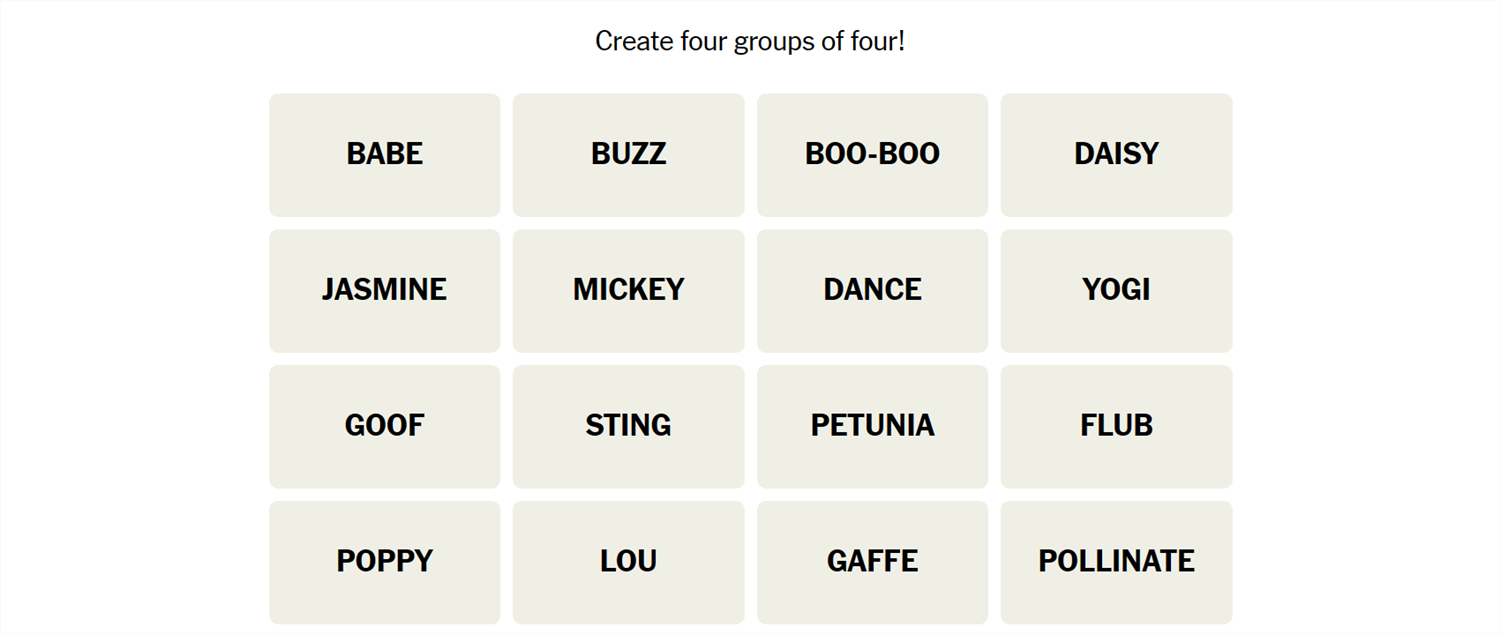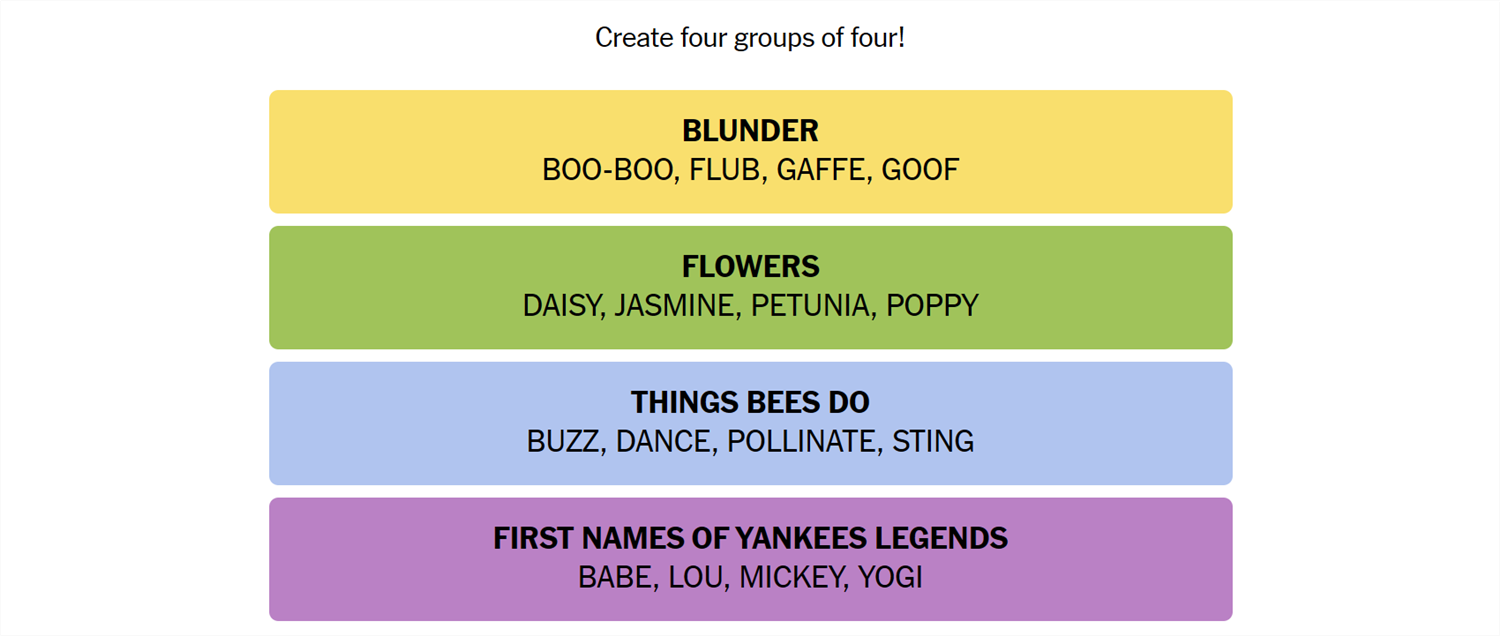Connections is a game from the New York Times that challenges you to find the association between words. It sounds easy, but it isn’t—Connections categories can be almost anything, and they’re usually quite specific. If you need a hand getting the answers, we’ve got you covered.
What Is Connections?
Connections is a game from the New York Times. The objective is simple: sort 16 words into groups of 4. Each group of words will be connected by some common idea or theme. That common element could be anything. We have seen everything from games that rely on the number of letters in the words to categories that require you to spot an extra letter at the end of the word. Sometimes they’re references to economics, other times they reference fairy tales. There is no telling what sort of association there will be between words.
Once you’re confident you understand the connection, select 4 words, then hit “Submit.” You have only four attempts in total, so don’t be too guess-happy.
Hints for Today’s Connections Groups
Here are a few hints for the 429th Connections game to get you started:
- Yellow: Mistakes.
- Green: They have petals, and pollinators love them.
- Blue: Like wasps, but much friendlier.
- Purple: Famous ball players.
If you still need help, the actual group names are:
- Yellow: Blunder
- Green: Flowers
- Blue: Things Bees Do
- Purple: First Names of Yankees Legends
Today’s NYT Connections Answers
Blunder (Yellow):
Boo-boo, Flub, Gaffe, Goof
Flowers (Green):
Daisy, Jasmine, Petunia, Poppy
Things Bees Do (Blue):
Buzz, Dance, Pollinate, Sting
First Names of Yankees Legends (Purple):
Babe, Lou, Mickey, Yogi
How Did We Solve This Connections Game?
August 14th’s game managed to stump me on the last group.
I started with “goof,” for no other reason than that I find the word entertaining. It can mean someone that isn’t serious, or it can refer to a mistake. Boo-boo, flub, and gaffe are also words we use to describe non-serious mistakes, so they seemed like good candidates to be stuck together. They were in the Yellow group, “Blunder.”
Daisy, Jasmine, Petunia, and Poppy are all flowers, so I just blindly stuck them together without thinking about it too hard. They were in the Green group, which was (unsurprisingly) named “Flowers.” Jasmine did make me think we might be looking for types of rice for a second, though.
I shuffled a few times, then buzz, pollinate, and sting landed together, and I realized we were talking about things that bees do. From there, dance was the only other word that fit. Yes, bees dance, and they use their dances to communicate information about where other bees can find pollen, nectar, or water. Their dances might even convey information by generating electrical fields. Incredible, right? The Blue group was “Things Bees Do.”
That left Babe, Lou, Mickey, and Yogi. Try as I might, I had literally no idea what tied these words together—sports are not my thing—and I seriously doubt I would ever have cracked it. Luckily, I didn’t really have to, since they were the only remaining words. They were in “First Names of Yankees Legends,” the Purple group.
How Do You Guess Connections Groups?
There is no quick, reliable way to approach Connections like there is with Wordle, since Connections isn’t algorithmic. However, there are a few things to keep in mind that can help.
- Look for similar parts of speech. Are some words verbs and others nouns? Are some adjectives? Try mentally grouping them based on those categories and see if any other patterns jump out at you.
- Are the words synonyms? Sometimes categories will just be synonyms for a phrase, or very close to synonyms. Don’t rely too closely on this, though. Occasionally, Connections will deliberately throw in words that are sometimes synonyms to mislead you.
- Try saying the words. Sometimes, saying the words helps. One puzzle we saw included the words go, rate, faster, clip, pace, speed, move, commute, and hurry—all of which are obviously related to the idea of motion. However, when you say them, it becomes a little more obvious that only four (go, move, hurry, faster) are things you’d actually say to prompt someone to get moving.
- Expect the red herring. Connections usually has words that could be plausibly, yet incorrectly, grouped together. Take the words Bud, Corona, and Light, as an example. You might instinctively see those three words together and assume they’re lumped together in a category related to beer—but they weren’t.
- Look for distinct words. If a word on your board doesn’t have multiple meanings or can really only be used in one context, try using that word as the basis for a category.
- Shuffle the board. Sometimes, moving words around will help you look at them in new ways.
If you didn’t solve this one, don’t feel too bad—there’s always tomorrow! And those words may align with a topic you’re interested in, giving you a leg up on the competition.






